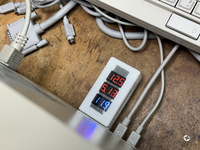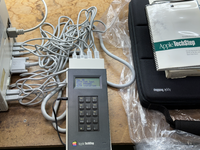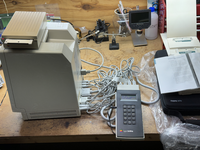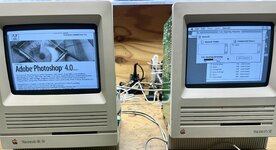Kai, you are an incredibly kind and generous person. If you were my next door neighbor, I'd give you a call saying, "I'll be right over!" But I suspect there would be some post office gripes about the battery.James - would you like me to send you a Windows 10 capable laptop for this sort of thing? We have plenty of basic 6/7/8/9/10th gen Intel stuff that gets chucked out for 'being old' at work.
The upside is that, despite the lack of Boot Camp Drivers, I was able to flash WarpSE this evening at home using my 2015 15" MacBook Pro, booted into Windows 10. It's not a true PC and the trackpad isn't as usable as it would be with Boot Camp Drivers, but I think it will suffice for now. Thanks again for your kindness though. And by the way, where do all those throw-away PCs end up going? Recycle centers?
@Zane Kaminski
With firmware 0.7b, Audio sounds really good to me.
Here's my D100's 48kHz 24-bit recording via the headphone jack (
WarpSE_0.7b_HeadphoneJack.WAV.zip
 drive.google.com
drive.google.com
SCSI Performance is noticeably faster and it's very nice indeed!
0.7b compared to 0.6h:
My paintbrush drawing test in MacPaint went without issue. My rapid left-right movement of the mouse didn't show any problems either. Honestly, @iPhil64 gave me the magic cure — just put the SE Reloaded motherboard inside the chassis. That's all I did, and the double bong problem and the mouse freezing and jumping problem are now a thing of the past. (As I said before though, they never impacted my stock SE motherboard, even when used outside the chassis, so I guess SE Reloaded just doesn't like to be "away from home."
While I've not done the Snooper serial port tests yet, I suspect those will go fine and my MacTest SE will freeze again. So tomorrow, I think I'll wire up my TechStep and see what that tells me about the serial ports. That issue only affected my SE Reloaded board. Serial Ports pass MacTest SE just fine when using my stock SE motherboard.
Please accept my humble apologies for having forgotten you posted that several thread pages ago. (I went through each thread page one by one until I tracked down your earlier post!) Because you said that back on 9/26, it really did slip my mind. On top of that, I had Boot Camp on the brain all day today, and I must say my brain is nearly fried as a result....page 429 from Apple's "Guide to Macintosh Family Hardware, 2nd Edition".

It is interesting that Apple never did put such a Warning in the Owner's Guides for the 128K through SE (which every Mac owner would have likely read, as opposed to Guide to Macintosh Family Hardware), but I guess not enough people complained about fried stereos for Apple to have improved Mac documentation with the additional of that warning.
Even so, you provided all the evidence needed to show what you are supposed to do. And I wish to thank you for that.
I consider this matter not too dissimilar from discharging the CRT. Most people don't seem to be aware of it, but Apple recommends only discharging at the Ground Lug, in the upper left corner of the CRT when viewing it from behind. Apple goes on to say that while you can attach your CRT discharge tool's ground clip to the metal chassis, it strongly recommends you disconnect the motherboard before doing so. If the ground lug is used, the motherboard can be left connected. This is why I always tell people to use the Ground Lug when discharging, because you don't need to worry about zapping your motherboard by accident that way. In other words, it's similar to what you just showed me. It's official and from Apple, but a lot of folks just don't know about it.
So thank you for being persistent and repetitive.
Sometimes we think people are idiots when we need to tell them the same thing multiple times. And I suppose that idiots do exist. But in my case, it's usually a matter of my mind being on something else, combined with my own "dumb luck?" of never have fried anything connected to a Mac headphone jack since 1984. And yes, I actually did connect my Dad's old Sanyo stereo amp (which he picked up on his return from Vietnam) to my 128K Mac in the 80's, as I recall. And it handled those high voltage levels just fine.
Anyway, I wish to repeat my appreciation your having emphasized this important info for all of us, @phipli . I probably stressed you out a bit, and for that, I am sorry. Please don't let me make you hesitate about speaking out. When you feel the need to say something, please do!




